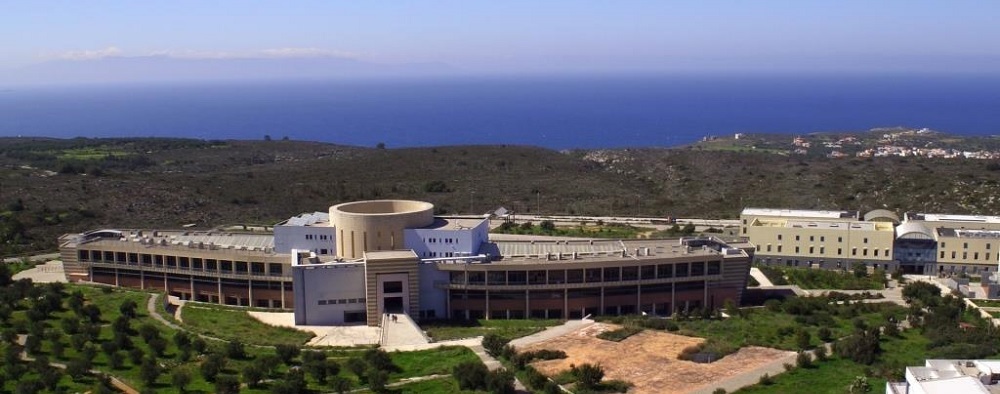- Αρχή
- Η Σχολή
- Σπουδές
- Έρευνα
- Διακρίσεις
- Ανακοινώσεις
English | Πολυτεχνείο Κρήτης | Επικοινωνία | Αναζήτηση
Κατάλογος Εκδηλώσεων
03
Μαρ
Κατηγορία:
Παρουσίαση Διπλωματικής Εργασίας
ΗΜΜΥ
 Η παρουσίαση θα γίνει με τηλεδιάσκεψη
Η παρουσίαση θα γίνει με τηλεδιάσκεψη 03/03/2022 18:00 - 19:00
03/03/2022 18:00 - 19:00 Σύνδεσμος τηλεδιάσκεψης: https://tuc-gr.zoom.us/j/94866711833?pwd=am9tZ1FsbU40YlhQWnNSQ1FTaFNwZz09
Σύνδεσμος τηλεδιάσκεψης: https://tuc-gr.zoom.us/j/94866711833?pwd=am9tZ1FsbU40YlhQWnNSQ1FTaFNwZz09Περιγραφή:
Meeting ID: 948 6671 1833
Password: 175657
ΠΟΛΥΤΕΧΝΕΙΟ ΚΡΗΤΗΣ
Σχολή Ηλεκτρολόγων Μηχανικών και Μηχανικών Υπολογιστών
Πρόγραμμα Προπτυχιακών Σπουδών
ΠΑΡΟΥΣΙΑΣΗ ΔΙΠΛΩΜΑΤΙΚΗΣ ΕΡΓΑΣΙΑΣ
ΣΑΜΩΝΑΚΗ ΜΑΡΙΑ
Θέμα
Χωρο-χρονική Εκτίμηση σε Ασύρματα Δίκτυα με Ανταλλαγή Μηνυμάτων
Spatio-temporal Εstimation in Wireless Networks with Message Passing
Εξεταστική Επιτροπή
Καθηγητής Άγγελος Μπλέτσας (επιβλέπων)
Αν. Καθηγητής Μιχαήλ Λαγουδάκης
Καθηγητής Αντώνιος Δεληγιαννάκης
Abstract
In wireless networks, position information is a vital requirement for the network to function as intended. Localization is usually based on time of arrival (TOA) measurements, and thus, accurate timing information is essential for time-based localization. In this thesis, we utilize timing and ranging information exchange between neighboring nodes to overcome this problem. Initially, we approach the problem of spatio-temporal estimation in a sequential manner. We first aim to synchronize the nodes, using prior art time synchronization methods based on linear programming or Gaussian belief propagation and then estimate their locations, using (cooperative) Gaussian belief propagation. Afterwards, we attempt to solve the problem in a joint way, by estimating the clock offsets and the locations simultaneously, assuming that the nodes exchange messages with the anchors (non-cooperatively). In both methods, we focus on proposing efficient belief propagation (BP)-based algorithms that reduce communication overhead and computational complexity. Towards this goal, we approximately linearize the nonlinear terms of the factor graph (FG) messages in order to obtain a closed-form Gaussian solution of message updates. Accordingly, only the means and variances need to be updated and transmitted by the network nodes. Finally, we present the numerical results of each method and discuss their advantages and drawbacks. Considering time offsets of order ∼ 10−8 sec (10 nanosec) and a 50×50 m2 plane, with 50 agents and 9 anchors, simulations showed that the proposed cooperative GBP can provide quite accurate location estimates, just 0.8 m off from the real values, under 20 m communication range and a noise variance for ranging measurements of σd2 = 1 m2, utilizing the sequential method. Under the same circumstances, joint estimation in a non-cooperative environment demonstrates a slightly larger average error, ∼ 1 m, but lowers the communication requirements of the network. In the joint non-cooperative case, the number of the messages that need to be exchanged is significantly reduced due to the lower number of neighbors per agent, since a circle of 20 m radius in a 50 × 50 m2 plane would contain much more agents than anchors, 15 − 20 and 5 – 7, on average, respectively.
Meeting ID: 948 6671 1833
Password: 175657



